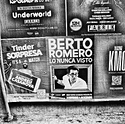Rick A
Subscriber
I've been printing B&W's for over 40 years, and have always used test strips. Recently I picked up an EM-10 thinking I could streamline my process. Now i guess I need to get some help with how to fully utilize it.
Thanks in advance for any pointers I know I'll be getting.
Rick
Thanks in advance for any pointers I know I'll be getting.
Rick










